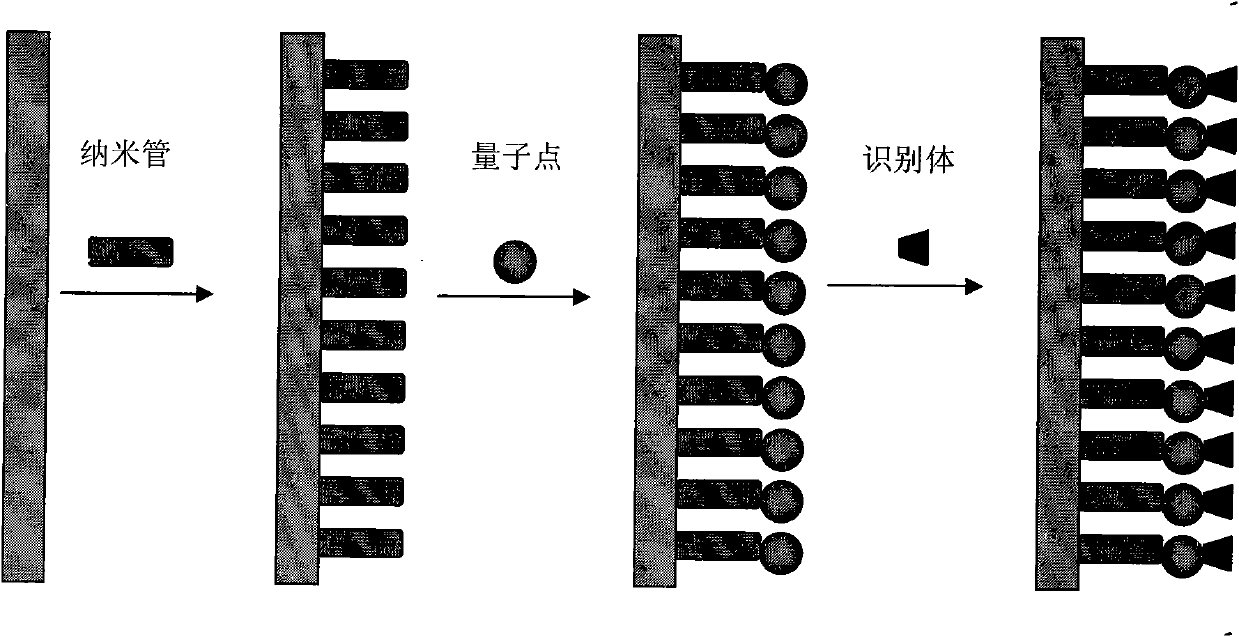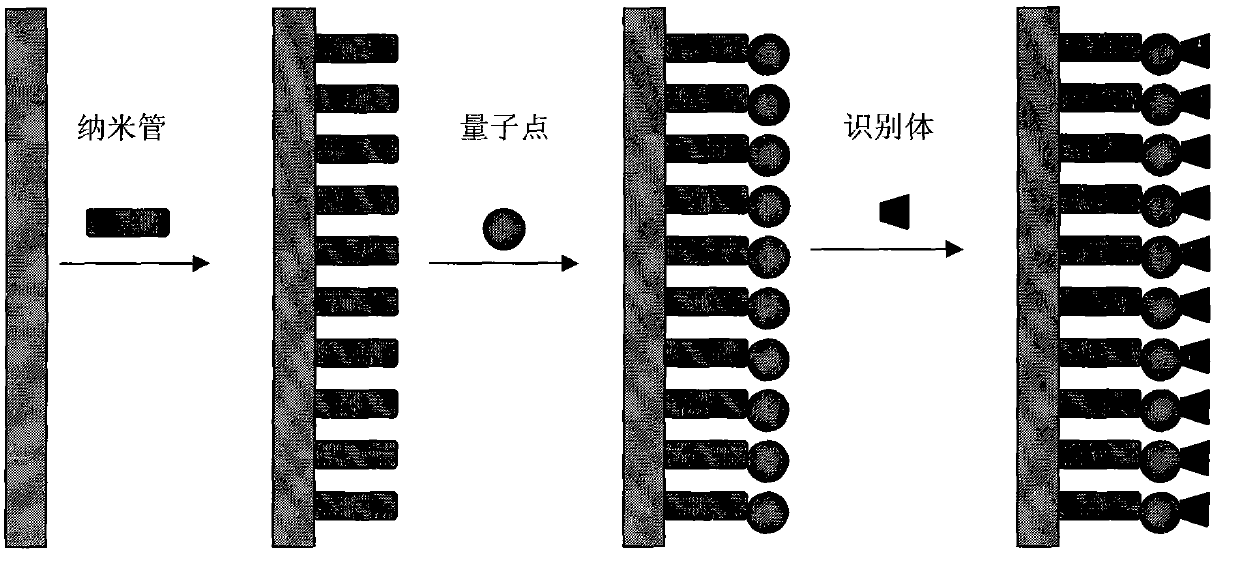Preparation and application of electrochemiluminescence sensor for detecting trace pesticide residue
A pesticide residue, electrochemistry technology, applied in chemiluminescence/bioluminescence, electrochemical variables of materials, analysis by chemical reaction of materials, etc., can solve problems such as uncomfortable rapid detection, complex detection process, and inability to rapid detection. , to achieve the effect of high-throughput screening, fast and simple operation, and avoid the influence of subjective factors
- Summary
- Abstract
- Description
- Claims
- Application Information
AI Technical Summary
Problems solved by technology
Method used
Image
Examples
preparation example Construction
[0038] A method for preparing an electrochemiluminescent sensor for detecting trace pesticide residues, characterized in that it comprises the following steps:
[0039] (1) select the identifier capable of interacting with pesticide residues;
[0040] (2) Use the prepared quantum dot material solution to increase efficiency, and combine carbon nanotubes or graphene to construct sensors;
[0041] (3) Using assembly modification technology, carbon nanotubes or graphene, quantum dot materials and recognition bodies are modified to the electrode surface to prepare electrochemiluminescent sensors.
[0042] The modification of the carbon nanotube or graphene, the quantum dot material and the target molecule recognition body in the present invention to the surface of the electrochemiluminescence sensor comprises the following steps:
[0043] (1) Grind the electrodes carefully with 0.05μm alumina powder, clean them with ultrasonic waves, and then wash them with 1mol / L HNO 3, 1mol / L ...
Embodiment 1
[0056] Embodiment 1 (organophosphorus, such as trichlorfon)
[0057] A method for preparing a molecularly imprinted membrane chemiluminescent sensor for detecting trichlorfon, comprising the following steps:
[0058] (1) Select p-sulfonic acid calix[4]arene that can interact with trichlorfon;
[0059] (2) Preparation of carbon nanotube solution: under the condition of ultrasonic stirring, 2 mg of multi-walled carbon nanotubes were added to 1 mL of dimethyl sulfoxide solution to obtain a black suspension, that is, a multi-walled carbon nanotube solution;
[0060] (3) Take 20 μL of the prepared multi-walled carbon nanotube solution, and sonicate for 30 minutes to obtain a uniformly dispersed multi-walled carbon nanotube solution;
[0061] (4) Preparation of CdTe quantum dot solution: in N 2 Under protection, the currently prepared NaHTe is used as Te precursor, and CdCl 2 Reaction, under the condition of thioglycolic acid as stabilizer, make water-soluble CdTe quantum dot sol...
Embodiment 2
[0069] Embodiment 2 (carbamate, as carbofuran)
[0070] A method for preparing an electrochemiluminescent sensor for detecting carbofuran, comprising the following steps:
[0071] (1) select the recognition body calix [8] arene sulfonate sodium that can interact with carbofuran;
[0072] (2) Preparation of graphene solution: under the condition of ultrasonic stirring, 2 mg of graphene was added to 1 mL of dimethyl sulfoxide solution to obtain a black suspension, namely graphene solution;
[0073] (3) Take 20 μL of the prepared graphene solution and ultrasonicate for 30 minutes to obtain a uniformly dispersed graphene solution;
[0074] (4) Preparation of CdSe quantum dot solution: under the protection of Ar gas, Se powder is dissolved in trioctylphosphorus to obtain Se solution, CdO is dissolved in oleic acid and octadecene, and the Se solution is injected to obtain the oil phase CdSe solution. The solution was added to ethanol, chloroform and thioglycolic acid to convert to...
PUM
 Login to View More
Login to View More Abstract
Description
Claims
Application Information
 Login to View More
Login to View More - R&D
- Intellectual Property
- Life Sciences
- Materials
- Tech Scout
- Unparalleled Data Quality
- Higher Quality Content
- 60% Fewer Hallucinations
Browse by: Latest US Patents, China's latest patents, Technical Efficacy Thesaurus, Application Domain, Technology Topic, Popular Technical Reports.
© 2025 PatSnap. All rights reserved.Legal|Privacy policy|Modern Slavery Act Transparency Statement|Sitemap|About US| Contact US: help@patsnap.com



